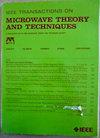利用变压器叠加技术设计紧凑型双向放大器
IF 4.1
1区 工程技术
Q2 ENGINEERING, ELECTRICAL & ELECTRONIC
IEEE Transactions on Microwave Theory and Techniques
Pub Date : 2024-12-11
DOI:10.1109/TMTT.2024.3506735
引用次数: 0
摘要
本文章由计算机程序翻译,如有差异,请以英文原文为准。
Design of Compact Bidirectional Amplifier Utilizing Transformers-Stacking Technique
Extremely high cost and form factors have become the most important reason limiting the promotion of large-scale phased-array systems for fifth-generation communication and K-/Ka-band satellite communication (SATCOM). This article presents a novel topology of ultracompact bidirectional amplifiers utilizing transformers-stacking techniques for low-cost large-scale phased arrays. In contrast to conventional bidirectional amplifier structures, this article proposes a more scalable bidirectional topology, which utilizes a magnetic self-canceling technique to stack the low-noise amplifier (LNA) into the power amplifier (PA) completely, realizing the function of the bidirectional amplifier with negligible performance penalty. In order to verify the proposed technique, the first bidirectional amplifier whose LNA mode and PA mode can work in different bands is implemented in a 45-nm CMOS SOI process for the K-/Ka-band SATCOM system. This design achieves 18.3-dBm peak saturated output power ( $P_{\text {sat}}$ ) and 15.9-dBm peak 1-dB compression output power ( $\rm {OP}_{1\,\text {dB}}$ ) in the Ka-band PA mode while maintaining a minimum noise figure (NF) of 2.46 dB in the K-band LNA mode. Furthermore, a notch filter is integrated into the three-winding transformer-based transmit/receive switches (TRSWs) to suppress the sidelobe of TX and avoid performance deterioration of the RX. Benefiting from the integration of a build-in-self notch filter, the proposed design has good gain suppression (>45 dB) to block the interferer from other TX chips in the LNA mode. The core size of this proposed design is only 0.14 mm2, which is only 20%–50% of the size occupied in conventional works.
求助全文
通过发布文献求助,成功后即可免费获取论文全文。
去求助
来源期刊

IEEE Transactions on Microwave Theory and Techniques
工程技术-工程:电子与电气
CiteScore
8.60
自引率
18.60%
发文量
486
审稿时长
6 months
期刊介绍:
The IEEE Transactions on Microwave Theory and Techniques focuses on that part of engineering and theory associated with microwave/millimeter-wave components, devices, circuits, and systems involving the generation, modulation, demodulation, control, transmission, and detection of microwave signals. This includes scientific, technical, and industrial, activities. Microwave theory and techniques relates to electromagnetic waves usually in the frequency region between a few MHz and a THz; other spectral regions and wave types are included within the scope of the Society whenever basic microwave theory and techniques can yield useful results. Generally, this occurs in the theory of wave propagation in structures with dimensions comparable to a wavelength, and in the related techniques for analysis and design.
 求助内容:
求助内容: 应助结果提醒方式:
应助结果提醒方式:


